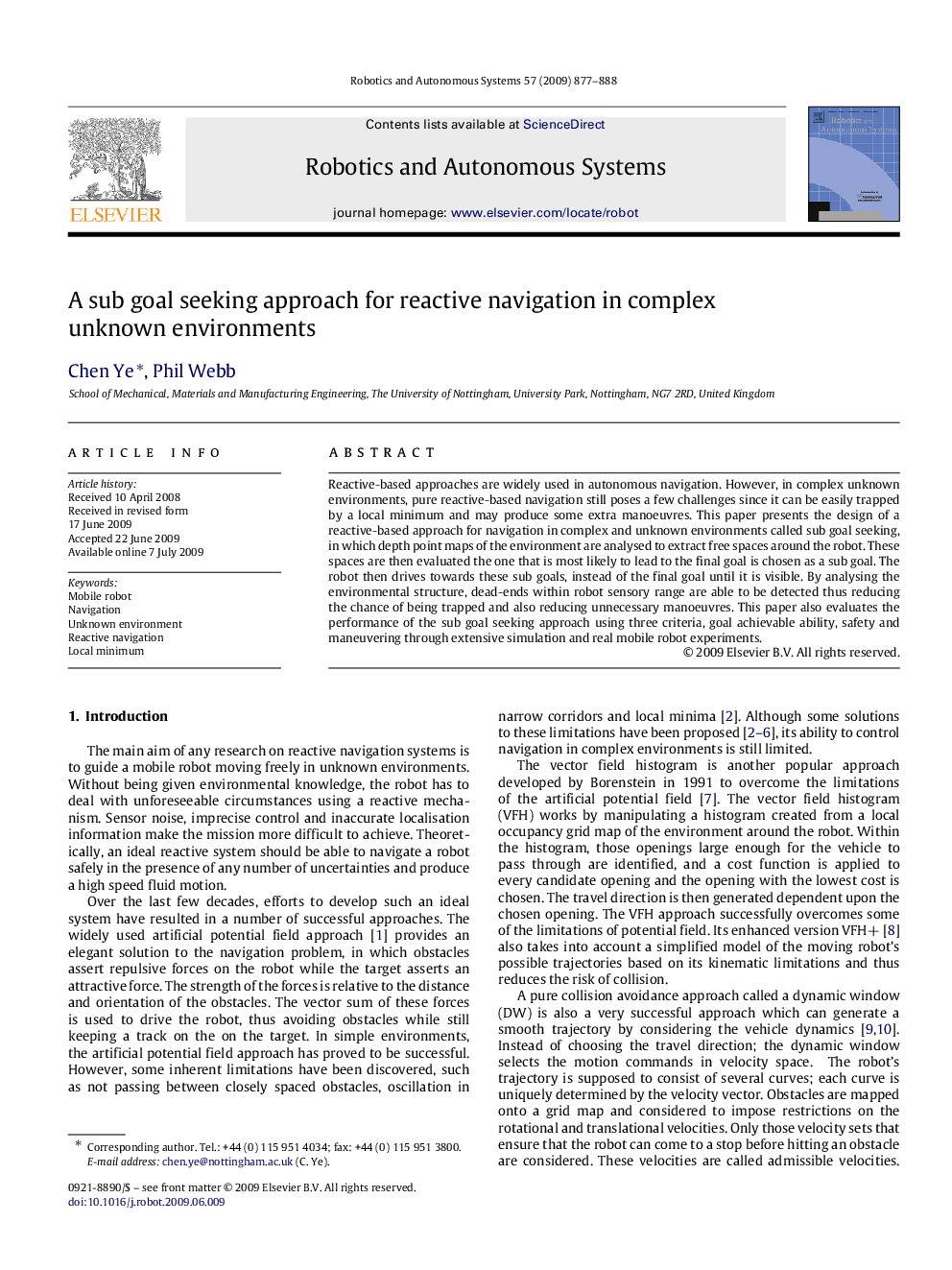| Article ID | Journal | Published Year | Pages | File Type |
|---|---|---|---|---|
| 412457 | Robotics and Autonomous Systems | 2009 | 12 Pages |
Reactive-based approaches are widely used in autonomous navigation. However, in complex unknown environments, pure reactive-based navigation still poses a few challenges since it can be easily trapped by a local minimum and may produce some extra manoeuvres. This paper presents the design of a reactive-based approach for navigation in complex and unknown environments called sub goal seeking, in which depth point maps of the environment are analysed to extract free spaces around the robot. These spaces are then evaluated the one that is most likely to lead to the final goal is chosen as a sub goal. The robot then drives towards these sub goals, instead of the final goal until it is visible. By analysing the environmental structure, dead-ends within robot sensory range are able to be detected thus reducing the chance of being trapped and also reducing unnecessary manoeuvres. This paper also evaluates the performance of the sub goal seeking approach using three criteria, goal achievable ability, safety and maneuvering through extensive simulation and real mobile robot experiments.
